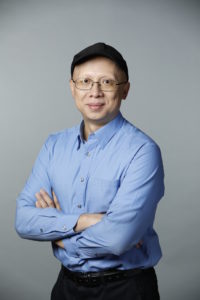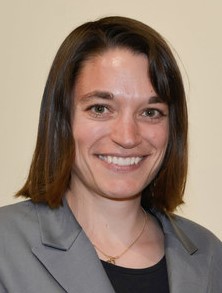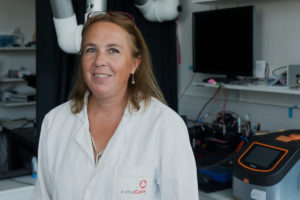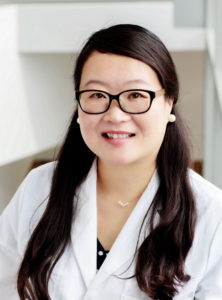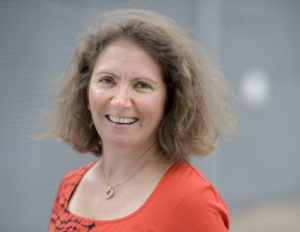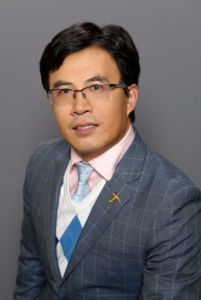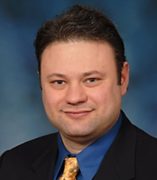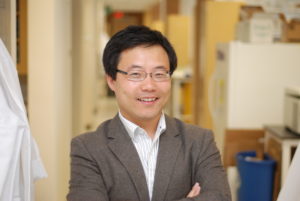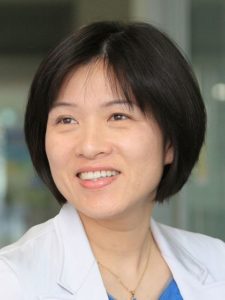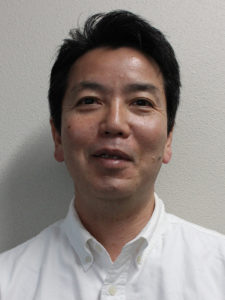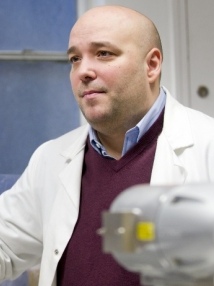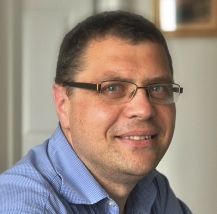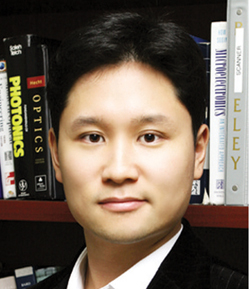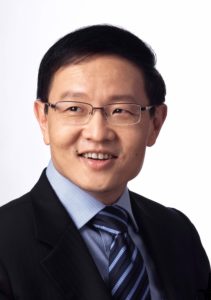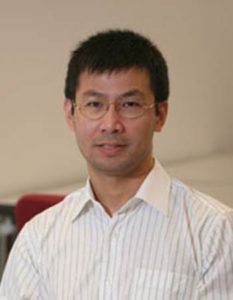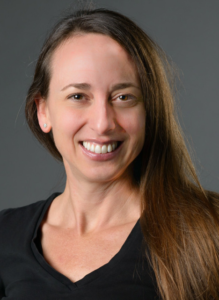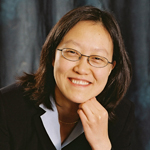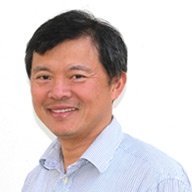Aaron Wheeler, Editor-in-Chief of Lab on a Chip, discusses challenges in microfluidics, exciting advancements and the future of the field.
1. What attracted you to pursue a career in microfluidics and how did you get to where you are now?
 I did my Ph.D. in chemistry working with Richard “Dick” Zare at Stanford University. I planned to work on projects related to capillary electrophoresis, but shortly after I started, Dick introduced me to a postdoc, Keisuke Morishima (now a professor at Osaka University), who was working in the then ‘new’ area of microfluidics. A few trips to the cleanroom later, I was hooked, and spent my time as a graduate student developing microfluidic methods to analyze the contents of single cells. After completing my Ph.D., I went to work as a postdoc with Robin Garrell at UCLA, where I learned about the technique known popularly as “digital microfluidics.” Robin introduced me to Chang-Jin “CJ” Kim and Joe Loo, and I spent two years working with those three labs, developing interfaces between microfluidics and mass spectrometry. I then moved to Canada to begin my career as an academic at the University of Toronto, where my research group and I continue to explore how microfluidics can be used to solve problems in chemistry, biology, and medicine. I will note that being an academic is great fun, but the popular perception of this job is wrong. Most readers of this piece (presumably) understand this, but I am always amazed when I talk to people outside of academia who assume that it is the professors who have the ideas, run the experiments, collect the data, interpret the results, and write the papers. Of course, this is not true at all – these things are primarily done by students and postdocs! The opportunity to work with energetic, creative, and hard-working young people is what makes this job so much fun.
I did my Ph.D. in chemistry working with Richard “Dick” Zare at Stanford University. I planned to work on projects related to capillary electrophoresis, but shortly after I started, Dick introduced me to a postdoc, Keisuke Morishima (now a professor at Osaka University), who was working in the then ‘new’ area of microfluidics. A few trips to the cleanroom later, I was hooked, and spent my time as a graduate student developing microfluidic methods to analyze the contents of single cells. After completing my Ph.D., I went to work as a postdoc with Robin Garrell at UCLA, where I learned about the technique known popularly as “digital microfluidics.” Robin introduced me to Chang-Jin “CJ” Kim and Joe Loo, and I spent two years working with those three labs, developing interfaces between microfluidics and mass spectrometry. I then moved to Canada to begin my career as an academic at the University of Toronto, where my research group and I continue to explore how microfluidics can be used to solve problems in chemistry, biology, and medicine. I will note that being an academic is great fun, but the popular perception of this job is wrong. Most readers of this piece (presumably) understand this, but I am always amazed when I talk to people outside of academia who assume that it is the professors who have the ideas, run the experiments, collect the data, interpret the results, and write the papers. Of course, this is not true at all – these things are primarily done by students and postdocs! The opportunity to work with energetic, creative, and hard-working young people is what makes this job so much fun.
2. What do you see as the biggest challenges facing researchers who work in your field?
There are of course myriad technical challenges in the Lab on a Chip community, but after observing many cycles of research in this field, I am convinced that technical challenges that arise are almost always ultimately solved – a testament to the incredible ingenuity of Lab on a Chip researchers. One non-technical challenge is the gap between what is claimed and what is demonstrated in scientific papers. We researchers experience great pressure to ‘sell’ our work, which occasionally leads us to make claims that surpass what is demonstrated. I urge my colleagues to try to resist this temptation, as it sets up problems down the road! For example, if I publish results A but claim that they are B, when another group comes along to report actually doing B, inexperienced editors and reviewers may point to the previous paper to say that the work is not novel because B has already been done! One of the great things about working with Lab on a Chip is that we have the best editors and reviewers in the world – they are knowledgeable, sophisticated, and experienced, and can (in the vast majority of cases) sniff out differences between what is shown and what is claimed. But the gulf between what is claimed and what has been demonstrated exists, which makes reviewing more challenging than it need be, and I see it having negative impacts in other settings with reviewers and editors who are not as experienced as ours.
3. What is the most exciting research paper that you have read recently? Which of your publications are you most proud of?
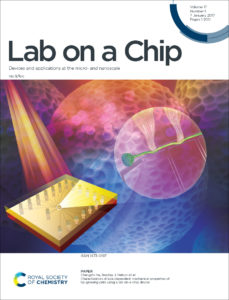
I will highlight two interesting papers from recent issues of Lab on a Chip. On the ‘fundamentals’ end of the spectrum, Binsley et al. (Lab Chip, 2020, 20, 4285-4295) described a remarkable system in which an oscillating magnetic field was made to drive the movement of a stretchable PDMS structure to control the flow direction and flow rate in a microfluidic device – a unique, self-contained “pump.” Meanwhile, on the ‘applied’ end of the spectrum, Sun et al. (Lab Chip, 2020, 20, 1621-1627) described an integrated device that amplifies viral nucleic acid sequences in swab eluent with smart-phone detection for point-of-care diagnosis – a clear example of the role our community is playing in responding to the global pandemic.
For my own publications, I am proud of them all/they are all my favourites (like my children)! If you force me to choose one, I would likely point you to our 2019 paper that described the technical challenges (and solutions to those challenges) that we encountered in our work interfacing digital microfluidics with NMR spectroscopy (Lab Chip, 2019, 19, 641-653). It is not our flashiest work, but (like a boxer) it represents some of the hardest work “pound for pound” that my lab has done, coming up with solutions to initiate, control, and monitor chemical reactions in sub-microliter samples in the bore of the superconducting magnet deep inside a high-resolution NMR spectrometer.
4. What career would you have chosen if you had not taken this career path?
I am absolutely jealous of my colleagues who are professors in the Lab on a Chip community by day and celebrated jazz musicians (or gourmet chefs, or football champions, etc.) by night. Unfortunately, I am not one of those people, and particularly since having children, family and work occupy nearly all of my time. This is amplified during these days of pandemic – like everyone, I am eager for the vaccines to roll out so that we can move to the next phase of our lives!
5. What do you see as the most important scientific achievement of the last decade? Why should young people study chemistry?
This decade has seen a steady stream of incredible advances (in our field and in others), but if I had to choose one, I would point to the single-cell genome/transcriptome sequencing revolution. The idea of single-cell sequencing is not a new one to Lab on a Chip readers, but the revolution went “mainstream” in 2015 when Lab on a Chip Advisory Board member David Weitz published seminal papers describing strategies to label cells with unique barcodes in droplets in microchannels (Cell, 2015, 161, 1187–1201; Cell, 2015, 161, 1202–1214), which captured the attention and imagination of researchers around the world. Companies working with related/complementary technologies got in the game (including most notably, 10x Genomics https://www.10xgenomics.com/) and the rest, as they say, is history – single-cell sequencing is now an almost routine technique in the biology lab. I encourage you to check out Weitz’s 2017 editorial on the subject (Lab Chip, 2017,17, 2539), and more generally, the associated collection of papers of papers in Lab on a Chip. It is always fun to see technologies from the Lab on a Chip community go mainstream, and I hope this is something that the journal can help promote more of in the years to come.
You also asked why young people should study chemistry, which is a great question. Chemistry is known as the ‘central science’ because it underpins nearly every part of the world that we touch, see, smell, and hear, and taste – it is thus a natural fit for anyone who is curious about the world around them. But as a matter of principle, I always encourage young (and young-at-heart) people to think outside the boundaries of disciplines to explore the world while wearing whatever disciplinary “hat” is needed to address the most interesting questions at hand. That’s one reason why I love being a part of the Lab on a Chip community. One can pick up any issue (I am choosing volume 20, issue 24, for these examples) to find papers from biomedical engineers (Lab Chip, 2020, 20, 4561-4571), chemists (Lab Chip, 2020, 20, 4632-4637), chemical engineers (Lab Chip, 2020, 20, 4528-4538), electrical engineers (Lab Chip, 2020, 20, 4582-4591), materials scientists (Lab Chip, 2020, 20, 4572-4581), mechanical engineers (Lab Chip, 2020, 20, 4512-4527), and many others.
6. What are you most looking forward to in your new role as Editor in Chief for LOC?
I love this journal. My mission as Editor-in-Chief is to work with our amazing team of Associate Editors to remind the community that Lab on a Chip is a great ‘home’ for the most important work that is being done in the field. We look forward to seeing your next submission!











